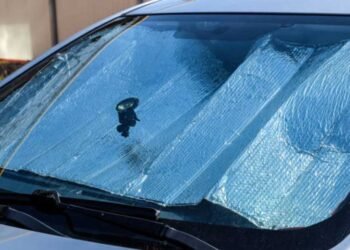Modern cars are equipped with an array of advanced safety systems that protect drivers, passengers, and pedestrians alike. From anti-lock brakes to lane-keeping assistance, these technologies are designed to prevent accidents and minimise injury. However, as with any piece of technology, these systems need regular checks and maintenance to ensure they’re functioning optimally. This article will walk you through the steps to make sure your car’s safety systems are working correctly, giving you peace of mind on the road.
Understanding Your Car’s Safety Systems
Before diving into how to check your car’s safety systems, it’s important to understand what these systems are and how they work. Most vehicles today come with an impressive suite of built-in safety features, including:
- Anti-lock Braking System (ABS): Prevents your wheels from locking up during braking, ensuring you can maintain control of the vehicle.
- Electronic Stability Control (ESC): Helps prevent your car from skidding or losing control during sharp turns or sudden manoeuvres.
- Adaptive Cruise Control (ACC): Automatically adjusts your speed to maintain a safe distance from the car in front.
- Lane Departure Warning (LDW) and Lane Keeping Assistance (LKA): Alerts you if you unintentionally drift out of your lane and helps steer the car back into the lane.
- Blind Spot Monitoring (BSM): Warns you of vehicles in your blind spots to prevent collisions.
- Advanced Driver Assistance Systems (ADAS): Includes features like automatic emergency braking, collision warning, and more.
The Importance of Regular Calibration
As more vehicles incorporate Advanced Driver Assistance Systems (ADAS), ensuring these systems are properly calibrated is essential. Calibration refers to adjusting the sensors and cameras that these systems rely on to accurately detect surroundings. Over time, minor bumps, changes in weather, or even routine repairs can cause these systems to lose accuracy. For instance, if your car has recently been involved in a collision or undergone a windscreen replacement, you may need to consult ADAS calibration specialists to ensure everything is functioning correctly.
How to Check Your Car’s Safety Systems
- Inspect the Dashboard
The dashboard of your car is the first place to look for any signs that something might be wrong with your safety systems. Most modern vehicles are equipped with warning lights that alert you if a system is malfunctioning. If you see a warning light for ABS, ESC, or any other safety feature, it’s essential to get the issue addressed immediately. Refer to your vehicle’s manual to understand what each warning light means and take appropriate action.
- Test the Anti-lock Braking System (ABS)
To check whether your ABS is functioning correctly, take your car to an empty parking lot or a quiet road where you can brake safely. Accelerate to a moderate speed and then apply firm pressure on the brake pedal. If the ABS is working correctly, you’ll feel the pedal pulsate as the system prevents the wheels from locking up. If there’s no pulsating or you notice the brakes behaving erratically, it’s time to get your ABS checked by a professional mechanic.
- Verify Lane Keeping Assistance (LKA) and Lane Departure Warning (LDW)
Lane-keeping assistance and lane departure warning systems use cameras and sensors to monitor your car’s position on the road. To check these features, drive on a quiet, straight road and intentionally drift toward the lane markings without signalling. If the systems are working correctly, you should hear a warning sound or see a visual alert on your dashboard. Additionally, lane-keeping assistance should gently guide your car back into the centre of the lane. If either system doesn’t respond, it’s important to have it inspected.
- Test Adaptive Cruise Control (ACC)
Adaptive cruise control helps maintain a safe distance from the car in front of you, adjusting your speed as necessary. To test this system, drive on a freeway or highway and set your cruise control at a reasonable speed. Then, allow another car to enter your lane at a slower speed. Your adaptive cruise control should automatically reduce your speed to maintain a safe following distance. If your car doesn’t slow down, or if you have to intervene manually, there may be an issue with the sensors.
- Ensure Blind Spot Monitoring (BSM) Is Working
Blind spot monitoring is a critical safety feature, especially for preventing collisions during lane changes. Most systems activate a warning light on your side mirrors or dashboard when a vehicle enters your blind spot. To check this, drive on a road with traffic in adjacent lanes. When a car passes into your blind spot, ensure the warning lights activate correctly. If they don’t, the sensors may need cleaning or recalibration.
The Role of Regular Maintenance in Safety
- Tyres and Brakes
While technology-based systems are vital, maintaining the physical components of your car is just as important. Regularly checking the condition of your tyres and brakes is essential for ensuring your safety systems can work effectively. For example, ABS won’t be as effective if your tyres have worn tread, and emergency braking systems rely on properly functioning brakes to stop the car quickly.
- Windscreen and Cameras
Many of the sensors and cameras that assist your safety systems are located on or near the windscreen. A dirty, cracked, or replaced windscreen can interfere with the accuracy of these systems. If you’ve recently had your windscreen replaced, make sure the cameras and sensors have been recalibrated to ensure proper functioning.
- Wheel Alignment
Proper wheel alignment is crucial for systems like lane departure warning and lane-keeping assistance. If your car’s wheels are misaligned, these systems may not accurately detect when you’re drifting out of your lane. Regular alignment checks can prevent this issue and ensure your car’s handling remains safe and predictable.
Why Calibration Matters
As cars become more advanced, regular calibration of safety systems becomes increasingly important. Even minor adjustments to your vehicle, such as tyre changes, suspension work, or windscreen replacements, can throw off the accuracy of your sensors and cameras. Inaccurate calibration could mean the difference between your car correctly detecting a hazard or missing it entirely. That’s why it’s essential to work with professionals to ensure your systems are working as intended.
When to Seek Professional Help
While there are several things you can check on your own, there are times when seeking professional help is necessary. If you notice any of the following, it’s a good idea to consult a mechanic or a specialist:
- Persistent warning lights for any safety systems
- Erratic behaviour of your car’s braking, steering, or lane-keeping systems
- Cameras or sensors that seem obstructed or malfunctioning
- Any collision, even a minor one, as this can knock sensors out of alignment
Specialists in car safety systems and ADAS calibration will have the equipment and expertise to diagnose issues that aren’t immediately obvious and ensure your vehicle’s systems are fully functional.
Your car’s safety systems are essential for protecting you, your passengers, and others on the road. By regularly checking these systems and addressing any issues promptly, you can ensure they’re always working when you need them most. Whether it’s simple maintenance like cleaning sensors or more complex tasks like ADAS calibration, staying proactive about your car’s safety systems can prevent accidents and save lives. If you ever have doubts about the functionality of these systems, don’t hesitate to seek the assistance of a professional mechanic or ADAS calibration specialists. By keeping your car’s safety systems in top shape, you’re taking a crucial step toward safer, more confident driving.












